Take a look at who is presenting this year!
All speakers including keynotes, podium, and poster presenters are listed below in alphabetical order.

Maryam Abdi-Oskouei
UCAR/JCSDA, Computational Scientist I
Maryam Abdi-Oskouei is a computational scientist with the Joint Center for Satellite Data Assimilation (JCSDA/UCAR). Her current work focuses on the development of the Joint Effort for Data Assimilation Integration (JEDI) framework and emission inversions of trace gasses. Maryam received her PhD from the University of Iowa in 2018. Her thesis focused on using various suites of measurements along with data assimilation techniques to reduce uncertainties in Chemical Transport Models (CTMs) and emission estimates. During this time, she participated in several field campaigns, such as the Lake Michigan Ozone Study (LMOS), ObseRvations of Aerosols above CLouds and their intEractionS (ORACLES), and the Korea US Air Quality Study (KORUS-AQ), as an air quality modeler. Maryam's research interests include air quality modeling across scales, data assimilation, and numerical modeling.
Poster Presenter

Jerrold Acdan
University of Wisconsin-Madison, Graduate Student
Jerrold Acdan is a Ph.D. candidate in Atmospheric and Oceanic Sciences at the University of Wisconsin–Madison. His research uses air quality models, ground-based measurements, and satellite observations to investigate the formation and transport of tropospheric ozone pollution in coastal urban areas of the United States. Prior to graduate school, he received a B.A. in Chemistry and Geography from the University of California, Berkeley, and worked as a Project Coordination Fellow at NASA Ames Research Center for the DEVELOP National Program.
Poster Competition Winner
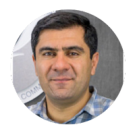
Ravan Ahmadov
NOAA/GSL, Physical Scientist
Dr. Ravan Ahmadov received a Ph.D. degree in atmospheric physics from Moscow State University in 2004. Dr. Ahmadov did postdoctoral research at the Max-Planck Institute for Biogeochemistry from 2005 to 2009. From 2009 to 2023, he worked for NOAA as a CU Boulder CIRES research scientist. Currently he is leading the atmospheric composition branch of NOAA/ESRL/GSL/EPAD. His research has been focused on the simulation of air pollution from various natural and anthropogenic sources. Currently, he is working on improving fire weather and atmospheric composition prediction capabilities in atmospheric models and applying these tools to understand and forecast various processes associated with fire weather and smoke transport.
Speaking in Session "Composition and Operational Forecasting from Daily to Seasonal Scales"

Kiran Alapaty
US EPA, Senior Scientific Advisor
Kiran Alapaty is the Senior Science Advisor in the Atmospheric & Environmental Systems Modeling Division in the ORD of US EPA. His research interests are in air quality modeling and model development, PFAS life cycle modelling, integrated assessment modeling, convective cloud parameterization development, boundary layer modeling, climate change and exposure science, and socio-economics. In the past, he was the Chief of the Climate Branch of the AMA Division with research interests in improving reginal climate data for use with exposure science research.
Before joining EPA in 2011, for several years Kiran was at DOE HQ as a Program Director for the DOE’s national climate program managing DOE’s National Labs and research grants. Prior to that, he was also a Program Director at the National Science Foundation managing climate research at NCAR and academia.
Kiran holds a MS in Aerospace Engineering from the Indian Institute of Sciences and a PhD in Atmospheric Science from North Carolina State University.
Speaking in Session "Breakthrough Innovations in Atmospheric & Air Quality Modeling"

Jeffrey Anderson
National Center for Atmospheric Research, Senior Scientist
Jeffrey Anderson completed a Ph.D. in Atmospheric and Oceanic Sciences at Princeton University in 1990. After a postdoc at the National Centers for Environmental Prediction, he spent the next decade at the Geophysical Fluid Dynamics Laboratory in Princeton building atmospheric models, developing software infrastructure for climate system models, and exploring ensemble prediction. Since 2001 he has been a scientist at NCAR, leading development of the Data Assimilation Research Testbed, a community software facility for ensemble data assimilation. He has developed several algorithms that facilitate high-quality ensemble data assimilation for geophysical problems. Anderson is a fellow of the American Meteorological Society and the American Geophysical Union.
Poster Presenter
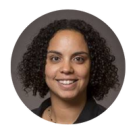
Karin Ardon-Dryer
Texas Tech University, Assistant professor
Karin Ardon-Dryer is an Assistant Professor in the Department of Geosciences at the Atmospheric Science Group at Texas Tech University. She studies the effect that aerosols (mainly dust particles) have on climate, the environment, and human health. In particular, she takes an interdisciplinary approach and combines field and laboratory measurements to investigate the different meteorological conditions that generate dust events and dust storms and those measured during these events. She focuses on understanding the impact dust events/storms have on air quality and also investigates the effects they will have on human health, using an interdisciplinary single-cell level approach, she developed.
Poster Presenter

Claudia Bernier
University of Houston, Graduate Student
Poster Competitor
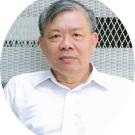
Long Bui Ta
Ho Chi Minh City University of Technology (Bach Khoa University), Associate Prof. Dr.
Long Bui Ta is a Vietnamese leading scientist specializing in the field of modeling environmental issues with more 140 scientific publications. The main directions are: modeling air pollution for local and regional scales, quantifying the impact of pollution, especially PM2.5 to human health, developing air pollution simulation software that takes into account complex terrain, building a system that integrates models with databases to quantify damage caused by pollution PM2.5 air for major cities in Vietnam. His doctoral thesis, 1998 was “Automation of data processing in geophysical monitoring systems in Vietnam” proposes technology to integrate geophysical databases, mathematical models with GIS to serve the goals of monitoring, evaluating, and forecasting air environment quality according to different scenarios. During the period 2005 - 2023, Bui Ta Long and his colleagues developed a platform based on WebGIS technology, named EnvimAP, to calculate and simulate the transport of air pollution taking into account complex terrain. His research on PM2.5 pollution is helping to solve problems of air pollution damages and compensation that are helping to solve regional problems for Ho Chi Minh City, Vietnam.
Poster Presenter
Parker Case
NASA, Postdoc
Parker Case is a postdoc at the Atmospheric Chemistry and Dynamics Laboratory at the NASA Goddard Space Flight Center. He completed his PhD at the University of Colorado, Boulder where he developed a version of the NASA GEOS Earth System Model to simulate sectional aerosol microphysics at a global scale associated with large volcanic events and applying that model to various satellite era-eruptions. In his current role at NASA, Parker is now continuing to develop new capabilities for the GEOS model while addressing science questions associated with stratospheric aerosol.
Poster Competition Winner

Corrin Clemons
University of California, Davis, Department of of Civil & Environmental Engineering, PhD Student
As a civil & environmental engineering PhD student at UC Davis, I strive to develop and implement sustainable practices to ensure a livable, breathable future. Growing up in the California Central Valley, I developed an appreciation for environmental conservation and a passion for making change. This passion has led me to pursue a career dedicated to the mitigation and elimination of the environmental hazards we face today.
Poster Presenter

Peter Colarco
NASA GSFC, Research Physical Scientist
Peter Colarco is a research physical scientist in the Atmospheric Chemistry and Dynamics Laboratory at the NASA Goddard Space Flight Center. His research focus on the use models and observations to understand the roles of atmospheric aerosols in the Earth system. He leads NASA GSFC Chemistry-Climate Modeling group and is a co-chair of the International Cooperative for Atmospheric Prediction (ICAP). He has participated on the science teams and as a forecaster and flight planner in a number of NASA airborne missions including: SOLVE, CRYSTAL-FACE, CR-AVE, TC4, ARCTAS, GloPac, HS3, FIREX-AQ, ACCLIP, and CPEX.
Speaking in Session "Unique/Extreme Events and their Impacts on Meteorology and Air Quality"

Yuyan Cui
California Air Resources Board, Air Pollution Specialist
Yuyan Cui is an atmospheric researcher specializing in multi-scale atmospheric modeling and data analysis. Currently, she is an air quality specialist at the California Air Resources Board. Prior to that, her background includes roles as an Assistant Research Professor at Penn State's Department of Meteorology and Atmospheric Science, and work at NOAA Chemical Sciences Laboratory as an NRC postdoc and a CIRES research scientist. Yuyan Cui's research activities center around two aspects, forward modeling the concentrations of air pollutants (including trace gases and particulate matters) at different spatial scales, and inverse modeling source-receptor relationships to understand their emission sources. Her overarching goal is to contribute insights into emission reduction policies and enhances climate prediction efforts through model-data synthesis frameworks.
Poster Presenter
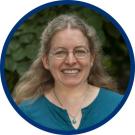
Louisa Emmons
NCAR/ACOM, Senior Scientist
Louisa Emmons is a Senior Scientist in the Atmospheric Chemistry Observations and Modeling Laboratory at the National Center for Atmospheric Research (NCAR) in Boulder, Colorado. Her research interests focus on the integration of measurements with models to investigate the impact of sources and their chemical evolution on tropospheric composition. She is part of the team leading the development of MUSICA (MUlti-scale Infrastructure for Chemistry and Aerosols, https://www2.acom.ucar.edu/sections/multi-scale-chemistry-modeling-musica) and has been leading the development of CAM-chem, a component of the Community Earth System Model (CESM).
Poster Presenter

Ian Faloona
UC Davis/Air Quality Research Center, Professor/Bio-micrometeorologist
Ian Faloona is a full professor and Bio-micrometeorologist in the Agricultural Experiment Station at the University of California Davis. He originally studied physical chemistry at UC Santa Cruz, including summer research in computational chemistry at Los Alamos National Lab, and then earned a Ph.D. in Meteorology from the Pennsylvania State University. For four years in between he worked as an air quality consultant with SECOR Inc. in Fort Collins, Colorado, running dispersion models and making measurements of industrial emissions. Later, after a postdoctoral appointment with the Advanced Study Program at the National Center for Atmospheric Research in Boulder, he joined the atmospheric science faculty at UC Davis. His research interests include the airborne investigation of vertical mixing and near-field pollutant dispersion, observational emission estimates, the meteorology of coastal fog, planetary boundary layer dynamics, biogeochemical cycling, and atmosphere/ocean photochemistry.
Poster Presenter
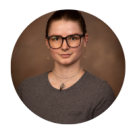
Sam D. Faulstich
University of Utah, Department of Chemical Engineering, PhD Candidate
Sam Faulstich (they/them) is a chemical engineering Ph.D. candidate. They have bachelor’s degrees in physics and atmospheric science and a master’s degree in atmospheric science from the University of Nevada, Reno. Their research focuses on modeling particle transport through the atmosphere to estimate human exposure to wildfire smoke. During this atmospheric modeling work, Sam has used Bayesian statistics to analyze information on fire emissions and evaluated physics inputs for atmospheric modeling uses. In their free time, Sam enjoys gluten-free baking and crossword puzzles.
Poster Competitor
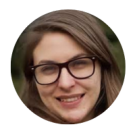
Ana Carla Fernandez Valdes
Washington State University, Graduate Research Assistant
Graduate research assistant student with 4 years of experience in atmospheric science related projects at WSU. The student has a Bachelor in Meteorology from University of Havana, Cuba and a Master in Earth Science from National Autonomous University of Mexico. The researcher presents expertise on solving major environmental and weather related issues that affects both human health and social-economics activities.
Poster Competition Winner

David Fillmore (Invited Speaker)
National Center for Atmospheric Research (NCAR), Scientific Programmer
Dr. Fillmore has 20+ years experience in scientific programming and computational physics, and has worked across a broad spectrum of fields including embedded control systems for hybrid solar/utility/battery home nano-grids, solar power forecasting, satellite image analysis, high performance plasma simulations, and, most recently, climate and air quality modeling and diagnostics.
He currently holds a position as a software engineer at the National Center for Atmospheric Research, Atmospheric Composition, Observations, and Modeling Lab, and has a B.S. degree in Physics from the University of California, Santa Cruz (1993), and a Ph.D. in Astrophysics and Atmospheric Science from the University of Colorado, Boulder (2005).
Speaking in Session "M3: Merging Measurements & Models"
Sh. Khabibullaev Forukh Boltabaev
Chief of Agency of the Hydrometeorological Service of the Republic of Uzbekistan. METEOINFOCOM
Poster Presenter

Shreya Guha
George Mason University, Student/ Graduate Research Assistant
Shreya Guha (she/her) is a PhD candidate and a research assistant in the department of Environmental Engineering in George Mason University. Her research primarily focusses on linkages between emissions, policies and meteorology in China. Previously, she had a master's in Atmospheric Science from the University of Calcutta and another master's in Earth Systems Science from George Mason University. The student has also worked on ensemble modelling as a research fellow under the Indian government at ISRO.
Poster Competitor

Yafang Guo
The University of Arizona, Postdoctoral Researcher
Poster Presenter

Jenny Hand (Invited Speaker)
Cooperative Institute for Research in the Atmosphere, Colorado State University, Senior Research Scientist
Dr. Jenny Hand is Senior Research Scientist and Fellow at the Cooperative Institute for Research in the Atmosphere (CIRA) at Colorado State University. Her research interests include characterizing the physico-chemical, radiative, and hygroscopic properties of atmospheric aerosols using techniques ranging from single-particle analysis to remote sensing. Her interests also include understanding the spatial and temporal variability of speciated aerosols across the United States by integrating data from large long-term U.S. monitoring networks such as the IMPROVE network, EPA’s Chemical Speciation Network (CSN), and EPA’s FRM and PM10 networks. Other interests include investigating long-term trends in aerosols and visibility degradation in relation to emission reductions, and the role of fine dust, coarse mass, and smoke on the status and trends of the aerosol mass and visibility budgets across the U.S.
Speaking in Session "Unique/Extreme Events and their Impacts on Meteorology and Air Quality"

Alicia Hoffman
University of Wisconsin - Madison, Graduate Student
Alicia Hoffman (she/her) is a PhD candidate in the department of Atmospheric and Oceanic Sciences at the University of Wisconsin-Madison. Her research uses chemical transport models to understand the heterogeneous chemistry impacting air quality. Specifically, she studies how nocturnal NOx chemistry affects early morning NO2 concentrations and the role of different sea spray source functions in determining particle chloride concentrations with the Community Multiscale Air Quality (CMAQ) model. She earned a Masters in chemistry from the University of California, Irvine in 2019, where she spent plenty of time at landfills measuring VOCs and methane.
Poster Competition Winner

Tracey Holloway (Keynote Speaker)
University of Wisconsin, Professor
Tracey Holloway is the Jeff Rudd and Jeanne Bissell Professor of Energy Analysis and Policy at the University of Wisconsin—Madison, jointly appointed in the Nelson Institute for Environmental Studies and the Department of Atmospheric and Ocean Sciences. Based in the Nelson Institute Center for Sustainability and the Global Environment, the Holloway Group works at the intersection of air quality, energy, climate, and public health.
Dr. Holloway has been recognized as a member of the National Academy of Medicine, as a recipient of the Ascent Award from the American Geophysical Union Atmospheric Sciences Section, and with multiple awards for science outreach, diversity, and mentoring. She serves as the two-time Leader of the NASA Health and Air Quality Applied Sciences Team, which connects NASA data with stakeholder interests in air quality management and public health, and she chairs the Energy Analysis and Policy graduate certificate at UW-Madison.
Prior to joining the UW-Madison faculty in 2003, Dr. Holloway earned an Sc.B. with honors in Applied Math from Brown University (1995) and a Ph.D. in Atmospheric and Oceanic Sciences with a graduate certificate in Science, Technology, and Environmental Policy from Princeton University (2001). Following graduate school, she completed a post-doctoral fellowship with the Columbia University Earth Institute, working with the Mailman School of Public Health (2001-2003).
Keynote: Linking Data with Decision-Making for Air Quality

Heather Holmes
University of Utah, Associate Professor
Heather Holmes is an associate professor in the Department of Chemical Engineering at the University of Utah. Her research focuses on transdisciplinary investigations of processes that govern the transport of atmospheric pollutants. Specifically, her research group uses ground-based sensors, atmospheric models, and satellite remote sensing to investigate atmospheric physics, air pollution sources, and transport and dispersion ultimately to provide data for human health and public policy assessments.
Poster Presenter

Chia-Hua Hsu
Department of Mechanical Engineering, University of Colorado, Boulder, Ph.D. student
Chia-Hua Hsu is a PhD student, who joined the Department of Mechanical Engineering at University of Colorado Boulder in Fall 2019. At CU Boulder, he is working with Prof. Daven Henze and focused on emissions inversion modeling by assimilating satellite observations using ensemble Kalman filter approach and WRF-Chem/DART modeling system.
Poster Competitor

Jingting Huang
University of Utah, Graduate Research Assistant
Jingting Huang is a Ph.D. candidate and research assistant in the Department of Chemical Engineering at the University of Utah. Her research interests include, but are not limited to, satellite remote sensing, smoke transport modeling, machine learning, and big data analytics. Her recent research focuses on the integrated use of remote sensing products and weather models to study aerosols and wildfire smoke plumes as well as their broad impacts on air quality, human health, and climate.
Poster Competitor

Cesunica Ivey
University of California Berkeley, Assistant Professor
Dr. Cesunica Ivey is an assistant professor in the Civil and Environmental Engineering Department at the University of California, Berkeley and the principal investigator of the Air Quality Modeling and Exposure Lab. She earned her Ph.D. in environmental engineering from the Georgia Institute of Technology in 2016. She was a postdoctoral researcher in the Department of Physics at the University of Nevada Reno through 2017 and was also a visiting scientist at NOAA’s Geophysical Fluid Dynamics Laboratory in the spring of 2018. She is an emerging leader in the areas of regional air quality modeling and its applications and community-scale air pollution exposure assessment. Her research interests lie at the nexus of air pollution science and engineering and environmental justice. She works in partnership with community organizations across California to prevent over-industrialization of already overburdened neighborhoods. She recently served on a panel at a public hearing for the congressional Environmental Justice for All Act, sponsored by the U.S. Democratic Natural Resources Committee to support the regulation of cumulative burdens in impacted communities. In recognition of her advocacy for frontline communities of the e-commerce supply chain expansion in inland Southern California, she was selected as a member of the American Chemical Society Chemical and Engineering News’ Talented 12 2021 class and a 2022 Women in Science Incentive Prize winner by The Story Exchange.
Speaking in Session "Breakthrough Innovations in Atmospheric & Air Quality Modeling" and also Poster Presenter

Makoto Kelp (Invited Speaker)
Stanford University, NOAA C&GC Postdoctoral Fellow
I am a NOAA C&GC postdoctoral fellow, working with Prof. Noah Diffenbaugh in the Department of Earth System Science at Stanford University. My current research focuses on identifying the climate drivers of wildfire smoke exposure in the West, to optimally locate prescribed burns that can reduce air pollution exposure and ecological impacts from large wildfires. During my Ph.D. at the Atmospheric Chemistry Modeling Group at Harvard University, my research focused on (1) using machine learning to expand the capabilities of atmospheric chemistry models, (2) developing dimensionality reduction algorithms that can determine the optimal and equitable placement of air quality sensors, (3) investigating the potential of prescribed fires to reduce wildfire smoke exposure in the Western United States, and (4) quantifying impacts of ozone chemical data assimilation on air pollution forecasts for NASA’s GEOS Composition Forecasting model (GEOS-CF). Previously, I worked as a junior research scientist at the University of Washington, where I conducted air quality case studies and used machine learning methods to analyze chemical mechanisms. I earned my B.A. in chemistry from Reed College, with research experience pertaining to air pollution monitoring and secondary organic aerosol modeling.
Speaking in Session "Breakthrough Innovations in Atmospheric & Air Quality Modeling"
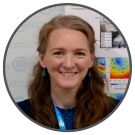
K. Emma Knowland
NASA GSFC, Global Modeling and Assimilation Office, Greenbelt, MD, Associate Research Scientist
Dr. Knowland is a lead scientist in the development of NASA GMAO’s atmospheric composition forecast system, GEOS-CF. She directs the transition from research & development to the production system and leads the evaluation of stratospheric composition in the GEOS-CF. Dr. Knowland’s research interests include both chemical and dynamical drivers of stratospheric and tropospheric composition. She is a member of the World Meteorological Organization (WMO) Global Air Quality Forecast and Information System (GAFIS) Steering Committee and Co-lead of Group 2 “Best practices and challenges for Air Quality Forecast Systems”.
Poster Presenter

Adam Kochanski
San Jose State University, Assistant Professor
I'm an atmospheric modeler and co-developer of WRF-SFIRE (a coupled fire-atmosphere model), interested in improving our understanding of wildland fires and their impacts on local weather and air quality. I'm fascinated by the wide range of scales associated with wildand fires and the mechanisms allowing fires to create their own weather. I'm also interested in assimilation of satellite observations into coupled fire-atmosphere models as well as the impact of regional climate change on local hydrological cycles, fuel moisture and fire behavior. I perform numerical experiments using a wide range of numerical models executed on large supercomputers. I mostly work with the Weather Research and Forecasting model WRF the coupled fire-atmosphere model WRF-SFIRE, chemical transport model WRF-CHEM, QUIC urban model, and Stochastic Lagrangian Particle model STILT.
Speaking in Session "Unique/Extreme Events and their Impacts on Meteorology and Air Quality"
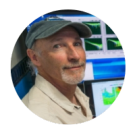
Andrew Langford
NOAA Chemical Sciences Laboratory, Research Chemist
Speaking in Session "Unique/Extreme Events and their Impacts on Meteorology and Air Quality"

Yang Li (Invited Speaker)
Baylor University, Assistant Professor
Dr. Li is an Assistant Professor in the Department of Environmental Science at Baylor University. The Li research lab studies atmospheric chemistry in the boundary layer as well as the interactions between air quality and climate change. The importance of her work, which entails the development and application of sophisticated atmospheric models, is in advancing the understanding of the chemical and physical processes of key air pollutants and their changes under future climate.
Speaking in Session "Modeling of Processes Across Multiple Scales"

Yicheng Li
UC Davis, Civil and Environmental Engineering, Ph.D. Student
After completing my undergraduate studies in Energy and Power Engineering at Shanghai Jiao Tong University, I pursued further education at Columbia University, specializing in Mechanical Engineering. I focused on RANS turbulence modeling of katabatic flow. Currently, I am enrolled in the Civil and Environmental Engineering program at UC Davis, my study concentrates on RANS/LES simulation of katabatic flow. My primary objective is to enhance the accuracy of simulations conducted over complex terrains, incorporating considerations of buoyancy and canopy effects.
Poster Competition Winner

Meiyun Lin (Invited Speaker)
National Oceanic and Atmospheric Administration (NOAA), Physical Research Scientist
Meiyun Lin started federal service as a Physical Research Scientist at NOAA Geophysical Fluid Dynamics Laboratory (GFDL) in September 2021. From June 2010 to September 2021, she was a Research Scholar at NOAA GFDL and Princeton University’s Cooperative Institute for Modeling the Earth System. Lin’s research seeks to advance knowledge on the interactions of air quality with weather and climate to inform public policy. Specifically, her current research focuses on land-biosphere feedbacks to air quality extremes in a changing climate, such as reductions in ozone removal by drought-stressed vegetation, increases in wildfire and dust emissions, and changes in BVOC emissions from vegetation. She is currently leading a cross-division effort at GFDL to build a variable-resolution global chemistry-climate model for research at the nexus of U.S. climate and air quality extremes. Her past research has examined how climate variability and change modulates intercontinental pollution transport, intrusions of stratospheric ozone deep into the troposphere, and their impacts on surface air quality. Lin earned her Ph.D. from the University of Tokyo (2008) and completed her postdoctoral work at the University of Wisconsin-Madison (2008-2010).
Speaking in Session "Meteorology-Chemistry Coupling, Feedbacks, and Interactions" and also Poster Presenter

Marcela Loria-Salazar
School of Meteorology, University of Oklahoma, Assistant Professor
During my academic career, I have been working on a broad range of topics; however, my focus has been on understanding atmospheric processes affecting air composition. More specifically, I have sought to improve air quality (AQ) forecasting by considering a wide variety of data and analysis techniques, including aerosol processes (physical and chemical composition), gases, weather observations, satellite retrievals, weather numerical models, and “big” data assimilation techniques. Additionally, I have some experience with field campaigns and instrument development.
Speaking in Session "Breakthrough Innovations in Atmospheric & Air Quality Modeling" and also a Poster Presenter

Sarah Lu
JCSDA & UAlbany, research associatee
Speaking in Session "Unique/Extreme Events and their Impacts on Meteorology and Air Quality"
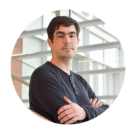
Carl Malings
Morgan State University and Global Modeling & Assimilation Office, Assistant Research Scientist
Carl Malings is an Assistant Research Scientist at Morgan State University, working under the GESTAR II cooperative agreement at the NASA Goddard Space Flight Center’s Global Modelling and Assimilation Office. He works to combine atmospheric chemistry models, satellite retrievals, and surface monitor data to better estimate & forecast air quality to support air quality decision-making globally. He also participates in capacity building through the NASA Applied Remote Sensing Training program, providing guidance on how to best use NASA data products to support air quality monitoring and management. He obtained his PhD in Civil and Environmental Engineering from Carnegie Mellon University in 2017. Following this, he worked as a post-doctoral researcher with low-cost air quality sensors until 2019.
Poster Presenter

Seyed Mohammad Amin Mirrezaei
Department of Hydrology and Atmospheric Sciences, University of Arizona, PhD Student
Amin Mirrezaei is currently a PhD student in atmospheric science at the University of Arizona in Dr. Avelino Arellano’s research group. His research focuses on regional to global air quality modeling using WRF-Chem, CAM-Chem, and MUSICA, along with satellite data of atmospheric composition, to quantify the relative contributions of different emission sources to ozone pollution.
Poster Competitor

Kazuyuki Miyazaki (Invited Speaker)
NASA Jet Propulsion Laboratory (JPL), Research Scientist
Kazuyuki Miyazaki is a scientist who specializes in atmospheric composition research. His research activities range from the development of chemical data assimilation system to the study of the impact of air quality on climate and human health. His chemical reanalysis product, based on assimilation of multiple satellite measurements from various NASA missions, has provided unique information on decadal changes in the atmospheric environment for various air quality and climate studies. He is a PI of several NASA projects, including the NASA Aura Science team and Earth Science U.S. Participating Investigator programs, and the JPL Science Understanding from Data Science project. His current research includes observing system simulation experiments (OSSEs), evaluations of satellite data products and chemistry-climate models, and air quality and greenhouse gas emission analysis.
Speaking in Session "M3: Merging Measurements & Models"

Arthur Mizzi
NASA Ames Research Center, NOAA Chemical Systems Laboratory, University of Colorado at Boulder Mechanical Engineering, Senior Research Scientist
Dr. Mizzi is an expert on data assimilation, regional chemical data assimilation, ‘top-down’ emission estimation, and numerical modeling. He developed WRF-Chem/DART and the “compact phase space retrieval” (CPSR) method for efficient assimilation of trace gas retrieval profiles. With NASA support, he has extended WRF-Chem/DART to ‘top-down’ emissions estimation, wildfire applications, and assimilation of OMI, TROPOMI, and proxy TEMPO retrievals. With continuing NASA support, he is extending WRF-Chem/DART to use the JPL and GMAO global models and assimilate TES, GOME2a, MLS, SCIAMACY, and CrIS retrievals. He is also preparing a 20-year (2005 – 2014) Tropospheric Regional Atmospheric Constituent and Emissions Reanalysis (TRACER-I).
Speaking in Session "Composition and Operational Forecasting from Daily to Seasonal Scales" and also a Poster Presenter

Domingo Muñoz-Esparza (Invited Speaker)
National Center for Atmospheric Research (NCAR), Project Scientist
Dr. Domingo Muñoz-Esparza has been a project scientist at the Research Applications Laboratory of the National Center for Atmospheric Research (NCAR) since February 2016. He received a PhD from the von Karman Institute for Fluid Dynamics in 2013 and was afterwards a postdoctoral researcher at the Los Alamos National Laboratory (2014-2015). Dr. Muñoz-Esparza is specialized in numerical modeling of atmospheric boundary-layer turbulence and near-surface phenomena with both large-eddy simulation and mesoscale models, including applications such as urban meteorology, flows over complex terrain, turbulence prediction algorithms, machine learning techniques, cloud dynamics, and numerical methods. In the last years he has focused on advancing multiscale capabilities in numerical weather prediction models. This effort includes the development of NCAR’s FastEddyâ LES model, of which he is co-developer of, and that provides an accelerated modeling framework based on graphics processing units (GPUs) computing. Dr. Muñoz-Esparza has authored or co-authored over 60 scientific articles in peer review journals in the realm of atmospheric sciences and more than 100 conference presentations.
Speaking in Session "Breakthrough Innovations in Atmospheric & Air Quality Modeling"

Tsengel Nergui
Lake Michigan Air Directors Consortium, Atmospheric Modeler
I have broad research interests in weather, air quality, climate, and their interactions. My research focuses on understanding impacts of climate variability and meteorological conditions on air pollutant concentration, deposition, and transport. I use ground measurements, regional-scale weather (WRF), and chemical transport (CMAQ and CAMx) modeling to gain a better understanding of how atmospheric physical and chemical processes interact across scales to shape polutants' dynamics in the atmosphere. The ultimate goal of my research has two folds: 1) contribute to building the body of knowledge needed for mitigating ecosystem and human health from air pollution by conducting research in sound theory, ensuring quality in qualitative research, and helping new/peer researchers to learn from my expertise, and 2) communicate scientific results in understandable and usable way to experts across disciplines, policy makers with different values and beliefs, and the public with diverse background.
Speaking in Session "Unique/Extreme Events and their Impacts on Meteorology and Air Quality"
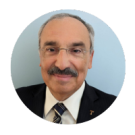
M. Talat Odman
Georgia Institute of Technology, Regents’ Researcher, Principal Research Engineer
Dr. Odman has over 25 years of research experience in the areas of atmospheric chemistry, air pollution meteorology and air quality modeling. Since 2007, his research focused on wildland fires and their air quality impacts. Sponsored by various national organizations, his wildland fire research resulted in contributions to the technical literature and to the development of simulation/decision support models. He served his profession as a member of professional organizations and advisory committees, session chair at conferences, and editor and reviewer of technical publications.
Poster Presenter
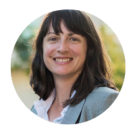
Holly Oldroyd
University of California, Davis, Associate Professor
Dr. Holly J. Oldroyd has held an appointment as Professor of Water Resources in the Department of Civil and Environmental Engineering at the University of California, Davis since 2016, and has a faculty affiliation with the Tahoe Environmental Research Center (TERC). She holds a Ph.D. in Civil and Environmental Engineering from École Polytechnique Fédérale de Lausanne (EPFL, Switzerland), and BS and MS Degrees in Mechanical Engineering from the University of Utah. She studies a wide range of turbulent transport in environmental flows and in particular, land-water-atmosphere interactions over mountainous terrain. She is also involved in a wide range of educational-outreach and mentoring programs, including the Society of Women Engineers, AvenueE, UC Davis First-Gen, and the TERC Youth Science Institute. Recently, she awarded a 2019 NSF-CAREER award to continue her research on land-atmosphere interactions in the Sierra-Nevada Mountains and was invited to the US-Frontiers in Engineering from the National Academy of Engineers (US FOE).
Speaking in Session "Unique/Extreme Events and their Impacts on Meteorology and Air Quality"
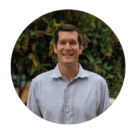
Dave Peterson (Invited Speaker)
Naval Research Laboratory, Meteorologist
Dr. Dave Peterson is a meteorologist at the US Naval Research Laboratory in Monterey, CA. He has broad scientific interests in both meteorology and satellite remote sensing. Dave currently supports the US Navy’s global aerosol modeling efforts, with a focus on extreme wildfires and smoke transport. He is a leading expert on thunderstorms caused by intense wildfires (pyrocumulonimbus), and the ensuing impact on stratospheric composition. Dave also serves as an interface between operational meteorologists, atmospheric chemistry scientists, and modelers, especially during large field experiments.
Speaking in Session "Unique/Extreme Events and their Impacts on Meteorology and Air Quality"

Gabriele Pfister
National Center for Atmospheric Research (NCAR), Senior Scientist
Gabriele (Gabi) Pfister received both her master’s degree in geophysics and meteorology (1997) and her doctorate in geophysics (2000) at the Karl-Franzens University in Graz, Austria. After a postdoc at the National Institute of Water and Atmospheric Research in New Zealand, she came to NCAR in 2002 under an Austrian Erwin Schroedinger Fellowship. Pfister’s graduate research focused on shortwave radiative transfer through the atmosphere. Over her career, she has expanded her research to the field of tropospheric chemistry and air quality. She has both developed and used models of global and regional chemical transport, and she has also used satellite retrievals of atmospheric composition and observations from field campaigns to successfully integrate modeling and measurements in her research. Pfister’s work is of direct relevance to society, and she has established strong connections with stakeholders, air quality managers, and policymakers. One of her most notable achievements has been the co-lead of the Front Range Photochemistry Experiment (FRAPPÉ), a major and highly successful field campaign along the Colorado Front Range in July-August 2014 with a focus on studying summertime ozone pollution.
Speaking in Session "Composition and Operational Forecasting from Daily to Seasonal Scales"
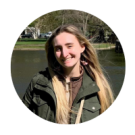
Hallie Pimperl
UC Davis, Graduate Student
I am a Mississippi native, graduating from West Jones High School in 2015. Right after high school, I moved to Massachusetts to pursue my bachelor's degree from Wellesley College. I graduated with my Bachelor of Arts in both Astronomy and French in 2019. Currently, I am a third-year graduate student at UC Davis in the Atmospheric Science Department, where I am part of Adele Igel's Cloud Physics group. So far, my research has focused on aerosol influences on cloud characteristics. I enjoy reading, weaving, and weather-themed jewelry. If you would like to know more, please don't hesitate to reach out!
Poster Competitor

Minghao Qiu
Stanford University, Postdoc fellow
Minghao Qiu is a Human and Planetary Health Postdoctoral Fellow at the Department of Earth System Science and Center for Innovation in Global Health at Stanford University. He uses observational data, statistical, and atmospheric modelings to study the impacts of air pollution and climate change on humans and society, and policies that could address these challenges. He received his Ph.D. degree from MIT (advisor: Noelle Selin), and bachelor's degree from Peking University.
Poster Competition Winner
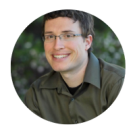
Sean Raffuse
UC Davis Air Quality Research Center, Associate Director - Software & Data
Sean Raffuse oversees data management and software development for laboratory operations, validation, and data analysis and the UC Davis Air Quality Research Center. His research focuses on developing, improving and applying fire and smoke models through the use of data sets, research, and information systems, and developing and using satellite-derived data products.
Speaking in Session "M3: Merging Measurements & Models"

Mukesh Rai
Jet Propulsion Laboratory, California Institute of Technology, Postdoctoral Fellow
Mukesh Rai is a postdoc research associate at NASA Jet Propulsion Laboratory, California Institute of Technology. His research revolves around the air quality study using satellite, reanalysis, and model simulation. His past works includes the aerosol optical properties, radiative forcing, and long-range transport mechanism. Currently, he is working on a novel approach to study the air quality extreme by leveraging chemical reanalysis data set. In sense, he is extending the concept of atmospheric river study in term of trace gases.
Poster Competitor

Aish Raman
NASA Ames Research Center, University of Arizona, Research Scientist
I'm a Research Scientist at NASA Ames and BAERI. I work on satellite data assimilation and regional modeling for atmospheric composition forecasts. My work focuses on coupling global and regional models and use WRF-CHEM DART to optimize emissions and concentrations of aerosols and gases.
Prior to NASA Ames, I worked at Pacific North West National lab on modeling aerosol ice nucleation.
I was a Senior Research Scientist at NASA Global Modeling and Assimilation Office, Goddard Space Flight center, Maryland. I worked on wave modeling and whitecaps. I developed a new parameterization for estimating oceanic whitecaps by combining results from a wave model and microwave satellite retrievals of whitecap.
Poster Presenter

Colleen Marciel Rosales
OpenAQ / UC Davis, Strategic Partnerships Director / Postdoc
Colleen Marciel F. Rosales is a Postdoctoral Scholar at the Air Quality Research Center at the University of California in Davis, where she is currently working on the intercomparison of two instrumental techniques for elemental composition analysis for particulate matter. She is also the Strategic Partnerships Director at OpenAQ, a nonprofit organization aiming to fight air inequality by providing universal access to real-time air quality data worldwide. Colleen has a Ph.D. in Environmental Science from Indiana University where she coordinated collaborative projects involving research groups from various universities. Prior to that, Colleen worked or interned at the Aerosol Technology Monitoring Lab at the Gwangju Institute of Science and Technology in South Korea, the Institute of Environmental Science & Meteorology and the Institute of Chemistry at the University of the Philippines (where she finished her undergraduate degree in Chemistry), Clean Air Asia, and the Philippine Nuclear Research Institute. Her research interests include instrumentation and modeling for indoor and outdoor air pollution.
Poster Competitor

Pablo Saide (Keynote Speaker)
UCLA, Assistant Professor
Dr. Pablo Saide is an Assistant Professor at the Department of Atmospheric & Oceanic Sciences and in the Institute of the Environment and Sustainability at the University of California, Los Angeles (UCLA). He is originally from Chile, where he got his Bachelor and Master degrees in Mechanical Engineering. In the US he obtained his Ph.D. in Civil and Environmental Engineering at the University of Iowa. Prof. Saide’s expertise focuses on air quality models and forecasts, emission inversions and data assimilation using satellite retrievals, and assessments of aerosol-climate interactions in models. His recent research has had a strong focus on studying smoke from fires and its impacts.
Keynote: Pathways to advance wildfire smoke predictions

Xiaorong Shan
George Mason University, Graduate Research Assistant
Hello, I am a PhD student who is in passion with air quality modeling research. My current project is to evaluate the effects of early-life community-level social and environmental factors on late-life ADRD and the extent to which these factors con- tribute to racial disparities on ADRD in a nationally representative sample. In this project, our team focuses on modeling historical air quality in the United States to produce historical exposure estimates for epidemiological research.
Poster Competitor

Jonathan Wynn Smith
NOAA/GFDL, Physical Scientist
Dr. Jonathan Wynn Smith is a Physical Scientist at NOAA/GFDL in Princeton, NJ. Dr. Smith is comparing geostationary spaced-based lightning flash frequency observations to various lightning flash frequency parameterizations in atmospheric and climate models. This preliminary work will lead to future GFDL atmospheric model development of lightning frequency and lightning-nitrogen oxide (LNOx) parameterizations. And subsequently improved atmospheric model estimates of ozone and methane.
Speaking in Session "M3: Merging Measurements & Models"
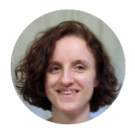
Ivanka Stajner (Invited Speaker)
NOAA, Deputy Director of the Environmental Modeling Center (EMC)
Deputy Director of the Environmental Modeling Center at NOAA/National Weather Service. Experienced research scientist and program manager. Managed National Air Quality Forecast Capability, and was a deputy manager for the Next Generation Global Prediction System (NGGPS). Principal investigator and author of peer-reviewed scientific publications. Specialties include mathematical methods in geophysics, data assimilation methods for combining model and observational information, as well as interdisciplinary research linking variablity in the environment and the human health.
Speaking in Session "Composition and Operational Forecasting from Daily to Seasonal Scales"

Allison Steiner (Invited Speaker)
University of Michigan, Professor
Allison Steiner is a Professor of Atmospheric Sciences in the Department of Climate and Space Sciences and Engineering at the University of Michigan. She received her B.S. in chemical engineering from Johns Hopkins University and her Ph.D. in atmospheric sciences from the Georgia Institute of Technology. Her research uses and develops models to explore the interactions of the biosphere and atmosphere, with the goal of understanding the natural versus human influence on climate and atmospheric chemistry.
Speaking in Session "Meteorology-Chemistry Coupling, Feedbacks, and Interactions"
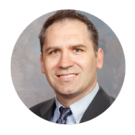
Craig Stroud (Invited Speaker)
Environment and Climate Change Canada (ECCC), Research Scientist
Dr. Stroud is a senior scientist in the Air Quality Research Division at Environment and Climate Change Canada. He leads a diverse team on the development of Canada’s Regional Air Quality Deterministic Prediction System (RAQDPS). This system is used for both daily air quality health index forecasting, but also on environmental assessments such as the US/Canada Air Quality Agreement. Dr. Stroud’s interests are in urban air quality and understanding the source apportionment of volatile organic compounds.
Speaking in Session "Composition and Operational Forecasting from Daily to Seasonal Scales"

Haitong Sun
Dr. Haitong Sun is an environmental geographer and epidemiologist. He obtained his Ph.D. in Atmospheric Chemistry and Earth Sciences from the University of Cambridge, under the supervision of Professor Alexander Archibald and Professor Yuming Guo (Monash University). Prior to that, he earned his Master’s degree in Epidemiology from Johns Hopkins Bloomberg School of Public Health, and Bachelor’s degrees in Environmental Science and Mathematics from Peking University. Dr. Sun’s current research interests encompass a diverse range of topics, including tropospheric ozone chemistry, causal inference in the climate system, Global Burden of Disease (GBD) epidemiology, urbanization and urban-rural environmental justice, as well as decarbonization and socioeconomic sustainable development. He is also recognized as a Fulbright Scholar for his contributions to the interdisciplinary field of environmental health research.
Speaking in Session "M3: Merging Measurements & Models"

Obin Sturm
University of Southern California, Graduate student
Obin Sturm is a graduate student at the University of Southern California working with Dr. Sam Silva on novel techniques to model atmospheric composition. Previously, Obin was a scientific programmer at the NASA Global Modeling and Assimilation Office working on GEOS-CF model development, and at the UC Davis Air Quality Research Center developing physically consistent machine learning approaches to model atmospheric chemistry.
Speaking in Session "Breakthrough Innovations in Atmospheric & Air Quality Modeling"

Beiming Tang (Invited Speaker)
NOAA ARL and George Mason University, Postdoc Research Fellow
Dr. Beiming Tang currently is a postdoc fellow at George Mason University and affiliate to NOAA air resources lab. Dr. Tang's research inputs including air pollutant source quantification, machine learning downscaling, satellite remote sensing, and deposition modeling. Please contact 585-532-3858 for collaborations.
Speaking in Session "M3: Merging Measurements & Models"

Qi Tang
Lawrence Livermore National Laboratory, Research Scientist
I am an atmospheric scientist. My research has focused on diverse topics of climate change, including atmospheric chemistry, stratosphere-troposphere exchange, land-atmosphere interactions and volcanoes. Currently, I intensively work on the DOE Energy Exascale Earth System Model (E3SM) and Atmospheric Radiation Measurement (ARM) observational data.
Poster Presenter

Madankui Tao
Columbia University in the City of New York/ Lamont-Doherty Earth Observatory, Ph.D. Candidate
Madankui Tao (Tao-ma) is a graduate student in the OCP division. She has a research interest in the intersections between air pollution, climate change, and health. Her current research applies ground-based measurements and satellite data to study urban ozone pollution.
Poster Competition Winner

Njie Teeda
Federal University of Technology, Akure, Nigeria., PhD student, Mrs
Teeda Njie is a climate science researcher at Federal University of Technology Akure (FUTA). Her area of research focuses on Effect of Pre-monsoon Biomass Burning Aerosols on Rainfall Characteristics over West Africa. Mrs Teeda is also a mathematics lecturer at the University of the Gambia with 11 years teaching and research experience. Mrs Teeda is also a co-founder of Sterling Technical Training Institute. An institute that focus on training youths on marketable skills particularly on the area of non-scientific climate related program. Mrs Teeda also participated in the research on renewable energy potential in the Gambia. This research attracted many scholars and scientist across the world and was able to attracted funding for the implementation of the recommendation of the finding.
Speaking in Session "Meteorology-Chemistry Coupling, Feedbacks, and Interactions"

Joao Teixeira
JPL/Caltech and UCLA, Senior Scientist
AIRS Science Team Leader Dr. João Teixeira received his Licentiate and Doctorate in Physics from the University of Lisbon. He also serves as the Deputy Director of the newly created Center for Climate Sciences at the Jet Propulsion Laboratory and supervises JPL's Climate Physics Group. Prior to joining the laboratory in early 2008, Dr. Teixeira was at the NATO Undersea Research Centre in La Spezia, Italy, the Naval Research Laboratory, Monterey, California, and the European Centre for Medium-range Weather Forecasts near London, England. Dr. Teixeira's research interests include the link between turbulence, clouds and climate, and the use of models and observations to better understand the interactions between the Earth's climate system and small-scale processes, such as turbulence, convection and clouds. He has developed new methods to represent turbulence and clouds, and has played a key role in developing new approaches for evaluating climate models using satellite observations. He serves on several international committees that address climate related issues.
Speaking in Session "Modeling of Processes Across Multiple Scales"

Laura Thapa
University of California, Los Angeles, Atmospheric and Oceanic Sciences, Los Angeles, CA, USA, Graduate Student
Laura Thapa is a rising 5th year PhD student working with Pablo Saide in the Department of Atmospheric and Oceanic Sciences at UCLA. Her research focuses on improving the representation of wildfire smoke in air quality models with an emphasis in forecasting emissions and plume rise. Laura received her B.S. in Applied Mathematics from UCSD in 2018 and is a recipient of the NASA FINNESST graduate student fellowship.
Poster Competitor

Worapop Thongsame
University of Colorado Boulder, PhD student
I do air quality modeling in the Thailand domain. I process more than 100 thousand variables with the data assimilation method and atmospheric modeling. Moreover, data preprocessing such as data cleaning and correlation checking are applied.
Poster Competitor

Daniel Tong
George Mason University, Research Scientist
Daniel Tong is an associate professor and director of Satellite and Earth System Studies Program at George Mason University. Daniel Tong obtained his PhD in Atmospheric Sciences from North Carolina State University and received postdoctoral training at Princeton University. Previously, he served as the Emission Scientist of the US National Air Quality Forecast Capability (NAQFC) program operated by National Oceanic and Atmospheric Administration. Daniel is interested in studying emissions of anthropogenic and natural sources, and their effects on air quality, human health, and climate.
Poster Presenter

Mohammadamin Vahidi Ghazvini
Washington State University, Postdoc
Mohammadamin Vahidi Ghazvini (Amin) is a Postdoctoral Research Associate at the Laboratory for Atmospheric Research (LAR) at Washington State University. His current works focuses on the improvements of air quality modeling system for the pacific northwest (AIRPACT), assessment of wildfire smoke exposure of grapes in the vineyard, and investigating the effect of PM 2.5 on the health of infants. Amin received his PhD from the University of Tehran in 2020. His dissertation focused on analysis of the dispersion and depositions of atmospheric mercury at Tehran city using WRF-SMOKE-CMAQ models. Amin's research interests include air quality modeling, estimation of atmospheric emission inventories, and numerical modeling.
Poster Competitor

Jordi Vilà-Guerau de Arellano (Invited Speaker)
Wageningen University, Professor
Dr. Jordi Vilà-Guerau de Arellano investigation focuses on both clear and cloudy planetary boundary layers, atmospheric mesoscale phenomena and the interaction between the atmosphere and the biosphere processes. His interests are also on the influence of atmospheric physical processes on atmospheric chemistry. His methodology is based on a combination of modelling techniques (from simple conceptual models to complex turbulence and mesoscale models) and analysis of field observations.
Speaking in Session "Modeling of Processes Across Multiple Scales"

Chien Wang
LAERO, CNRS/UPS, Senior Research Scientist
I am a Senior Research Scientist of Atmospheric Chemistry in MIT’s Center for Global Change Science. I am also with MIT’s Joint Program on the Science and Policy of Global Change, Program in Atmospheres, Oceans and Climate (PAOC), and Department of Earth, Atmospheric, and Planetary Sciences (EAPS). My research interests include atmospheric aerosols and clouds, tropospheric chemical processes, and the roles of aerosol-cloud interaction in atmospheric chemistry, precipitation, and climate dynamics. I also study climate impacts of anthropogenic activities that alter atmospheric compositions or change the Earth’s surface properties or energy budget. My researches have been generously supported by NSF, NASA, EPA, NOAA, Ford Motor Company, the Singapore National Research Foundation through the Center of Environmental Sensing and Modeling (CENSAM) of the Singapore-MIT Alliance for Research and Technology (SMART), and by many other government agencies including US DOE as well as many industrial sponsors through the MIT Joint Program on the Science and Policy of Global Change.
Speaking in Session "Composition and Operational Forecasting from Daily to Seasonal Scales"

Chi-Tsan Wang
George Mason University, Postdoc Researcher
Dr. Wang graduated from UNC-Chapel Hill Environmental Sciences and Engineering program in 2020. He studied how the cannabis industry impacts the air quality of Colorado, including the emission rate measurement by leaf enclosure method, assessing ozone impact by air quality model, and the ambient monoterpenes concentrations near cannabis cultivation facilities by adsorbing cartridges. Dr. Wang is now a postdoc researcher at George Mason University, Center for Spatial Information Science and Systems (CSISS).
Speaking in Session "Modeling of Processes Across Multiple Scales"

Siyuan Wang
CIRES/NOAA/CSL, Research Scientist II
Dr. Siyuan Wang uses a variety of modeling tools and observations (airborne, satelite) to study the chemical and physical processes in the atmosphere, as well as the broad impacts on air quality and the climate system. His current research focuses on the dynamics and chemical evolution of wildfire smoke. He is also interested in the application and integration of novel machine learning techniques in Earth system models.
Poster Presenter
Ting (Diane) Wang
UC Davis, PhD student
In July 2019, I completed my Bachelor of Science in Atmospheric Sciences at Nanjing University, followed by my Master of Science in Physical Geography in May 2021 at Michigan State University. Throughout my academic journey, I have conducted extensive research on micrometeorology, with a focus on slope flows over complex terrain, flux transport within the surface layer, and fire weather. In 2020, I had the opportunity to attend the East Lakes Regional Division AAG Annual Meeting, where I presented my research on the potential impact of land use and land cover changes on atmospheric conditions conducive to wildfires in the United States. This research culminated in the publication of the paper "Will Land Use Land Cover Change Drive Atmospheric Conditions to Become More Conducive to Wildfires in the United States?" with Zhong et al. Beyond academics, I enjoy swimming and running marathons in my free time.
Poster Presenter

Shih-Wei Wei
Joint Center for Satellite Data Assimilation and University at Albany, Dr.
Dr. Shih-Wei Wei is a Postdoctoral Fellow with the Joint Center for Satellite Data Assimilation (JCSDA/UCAR) and the Atmospheric Sciences Research Center (ASRC) at State University of New York (SUNY) at Albany. He currently works as a member in the composition team of the Joint Effort for Data Assimilation Integration (JEDI). Shih-Wei received his PhD from SUNY Albany in May 2023. His thesis focused on enhancing the usage of thermal infrared satellite measurements affected by aerosols (i.e., under hazy-sky conditions). Before he joined the PhD program at SUNY Albany, Shih-Wei worked in the numerical weather prediction (NWP) group in the Central Weather Bureau in Taiwan. Shih-Wei’s research interests include aerosol modeling, data assimilation, and the interactions between NWP and air quality.
Poster Competitor

Benjamin Yang
Columbia University, Graduate Student
Ben is a PhD student in the Department of Earth and Environmental Sciences at Columbia University. He is working with Prof. Dan Westervelt on atmospheric chemistry and air quality modeling using GEOS-Chem, satellite data, ground-based monitors, and machine learning algorithms. Previously, he was a systems test engineer at L3Harris Technologies and studied meteorology at Penn State University.
Poster Competitor

Yang Zhang
Northeastern University, Professor and Associate Department Chair
Dr. Zhang specializes in atmospheric and environmental research at the interface of Earth system sciences that crosses traditional disciplinary boundaries including energy, air, water, land, ocean, and human health. Over the years, Dr. Zhang has contributed to the development, improvement, application, and evaluation of major 3-D air quality, climate, and Earth system models on urban, regional, and global scales such as STEM III, GChM, MIRAGE, SCICHEM, CMAQ, CMAQ-MADRID, CAMx, MM5, WRF, and mesoscale and global-through-urban WRF/Chem, WRF/Chem-MADRID, WRF-CAM5, WRF/Chem-ROMS, and CESM/CAM5. Her group has also worked on Street-in-Grid models such as SinG, hydrological models such as WaSSI, and health modeling tools such as BenMAP-CE. Dr. Zhang has devoted sustained efforts to solve some of the most pressing and challenging environment- and energy-related scientific and technical issues related to air and water pollution, acid deposition, global warming and other adverse climate change, as well as associated adverse human health and ecosystem impacts. Dr. Zhang’s research advances the scientific understanding of major atmospheric and environmental issues by developing and utilizing numerical models and analysis tools at various scales (from local to global) to address relevant science and policy questions pertaining to controlling air pollution, mitigating adverse climate change and human health, and minimizing environmental damages in the entire Earth system.
Poster Presenter

Qindan Zhu
Massachusetts Institute of Technology, Postdoc Fellow
Qindan did her undergrad at Peking University with double majors in environmental science and mathematics. After getting her bachelor's degree in 2017, She came to UC Berkeley for PhD and worked with Prof Ron Cohen. Her research topics include satellite observations of air pollutants and OH chemistry. She is now a NOAA climate & global change postdoc fellow working with Prof. Arlene Fiore at MIT, working on chemistry-climate interaction.
Speaking in Session "Meteorology-Chemistry Coupling, Feedbacks, and Interactions"
